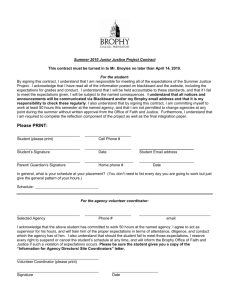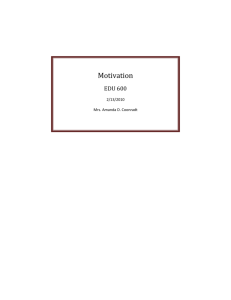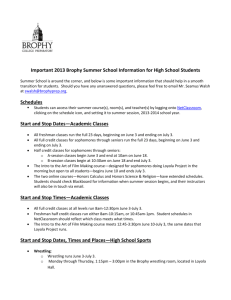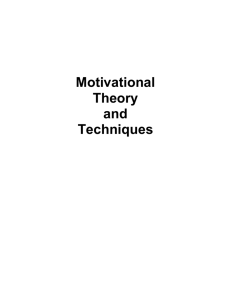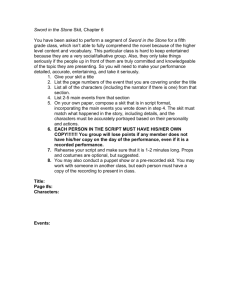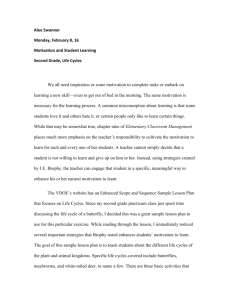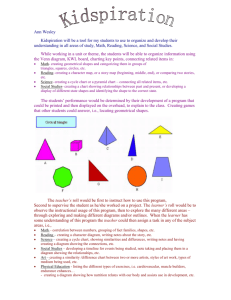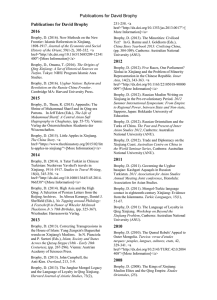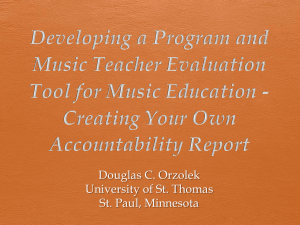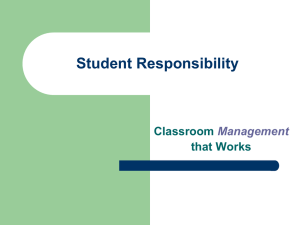enhancing motivation to learn
advertisement
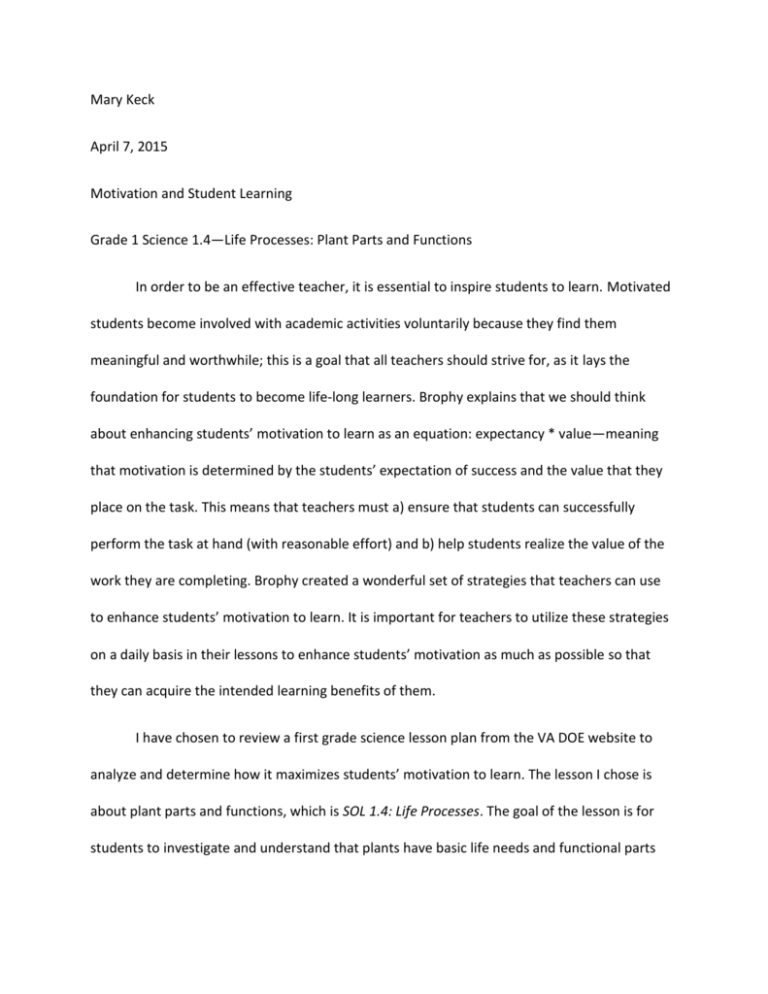
Mary Keck April 7, 2015 Motivation and Student Learning Grade 1 Science 1.4—Life Processes: Plant Parts and Functions In order to be an effective teacher, it is essential to inspire students to learn. Motivated students become involved with academic activities voluntarily because they find them meaningful and worthwhile; this is a goal that all teachers should strive for, as it lays the foundation for students to become life-long learners. Brophy explains that we should think about enhancing students’ motivation to learn as an equation: expectancy * value—meaning that motivation is determined by the students’ expectation of success and the value that they place on the task. This means that teachers must a) ensure that students can successfully perform the task at hand (with reasonable effort) and b) help students realize the value of the work they are completing. Brophy created a wonderful set of strategies that teachers can use to enhance students’ motivation to learn. It is important for teachers to utilize these strategies on a daily basis in their lessons to enhance students’ motivation as much as possible so that they can acquire the intended learning benefits of them. I have chosen to review a first grade science lesson plan from the VA DOE website to analyze and determine how it maximizes students’ motivation to learn. The lesson I chose is about plant parts and functions, which is SOL 1.4: Life Processes. The goal of the lesson is for students to investigate and understand that plants have basic life needs and functional parts and can be classified according to certain characteristics. Basically, to teach students the basic parts of plants and their functions. The lesson I chose incorporated all of Brophy’s motivation enhancement strategies phenomenally, I have yet to think of something that I would change to make it any better. The entire foundation of the lesson is in line with maximizing students’ motivation to learn. First, it included novel/variety elements by suggesting that the lesson is taught outside. Looking back to my years in elementary school, I remember how much I loved having science class outside. It inspired not only me, but my entire class to get involved with the material we were learning. Next, the lesson directed that students perform a skit about the parts of a plant, having a group for each part that would recite a special chant about the part and its’ function. Each individual group gathers and practices the chant, using special props and movements. Then, the groups come together and perform the skit as a class, saying the closing line together. This is a great example of two of Brophy’s strategies: allowing students to create finished products and providing opportunities for students to interact with peers. The fun activity gave meaning and purpose to the assignment and greatly increased the students’ motivation to learn about plant parts and their functions collaboratively with their peers. The lesson also related to the students’ own lives when it directs the teacher to have students examine real plants using a magnifying lens. Giving the students the opportunity to examine the parts of plants that they see on a regular basis helps enhance motivation by making a meaningful, real world connection. Lastly, the lesson provided opportunities for choice when it instructed to have students draw a plant that they like and label its basic parts. Allowing students to choose the plant that they draw connects the lesson to the students’ personal interests, which is one of the best ways to enhance motivation to learn. As previously mentioned, I cannot think of anything that could make this lesson better in terms of motivation. It thoroughly incorporated each of Brophy’s strategies and I would not make any changes. It even included strategies for differentiation! It really doesn’t get much better than that. In whole, the lesson plan that I chose did an amazing job at maximizing students’ motivation to learn. They utilized all of Brophy’s strategies for enhancing motivation to learn, including: including novel/variety elements by teaching the lesson outside, providing opportunities for choice by having the students draw and label a plant that they like in particular, relating the lesson to the students’ own lives by allowing them to investigate real plant parts with magnifying glasses, and providing opportunities for students to interact with peers when they perform the skit. I will make sure that my lesson plans enhance student motivation to learn as much as this one did.
